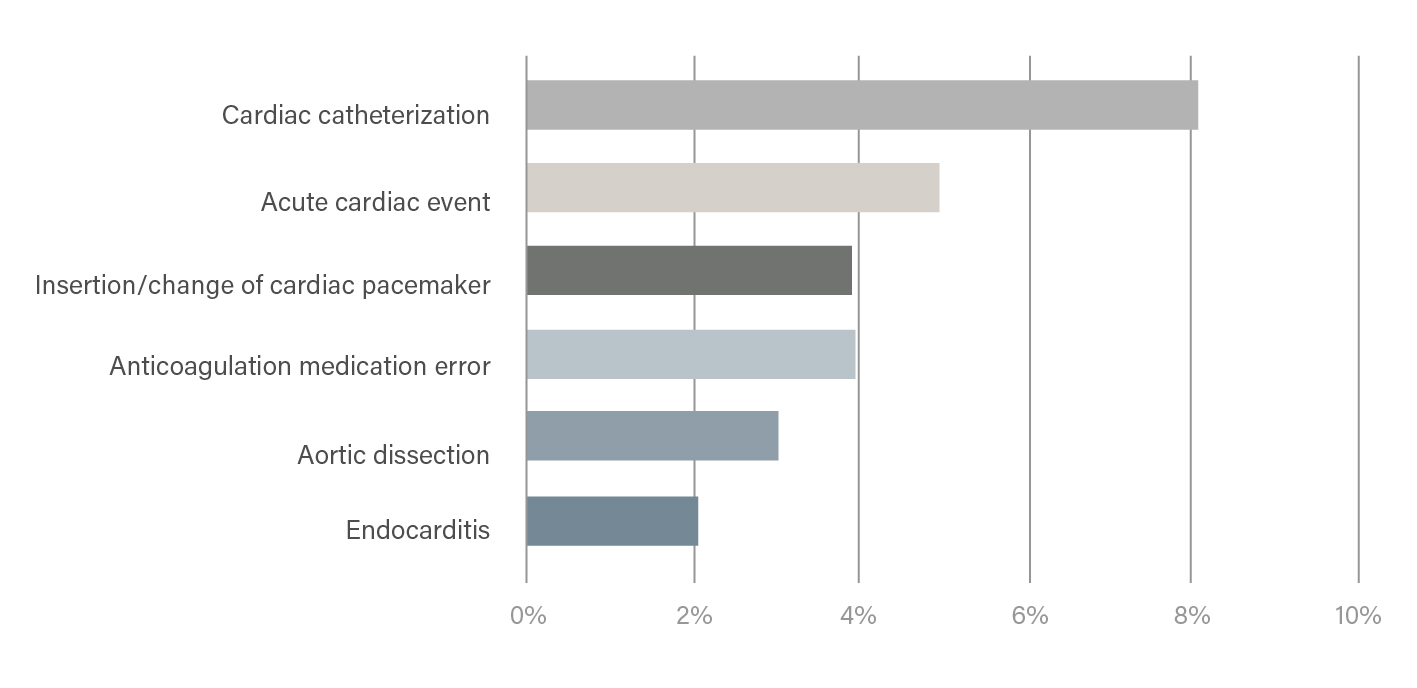Practice of Medicine
article
Reducing the Risks of Cardiac Catheterization
Cardiac catheterization accounts for 8% of medical malpractice claims among cardiologists insured by MagMutual. Not surprising, given that it’s one of the most common heart procedures in the United States, performed more than 1 million times each year.

To help cardiologists reduce that number, MagMutual’s medical faculty and risk consultants have analyzed our claims data, determined the main causes of claims related to cardiac catheterization and developed strategies to improve patient outcomes.
Top Risks
The main causes of claims related to cardiac catheterization are:
- Improper technique
- Failure to monitor
- Failure to diagnose
- Provider-to-staff communication
- Staff-to-staff communication
Top Strategies for Reduction
Based on these top risk drivers, implementing the following clinical and operational strategies can help you prevent unexpected outcomes and increase defensibility of a medical malpractice claim:
Clinical strategies
- Angio-Seal or other newer closure device placement should only be performed by a certified physician or practitioner.
- Radial artery catheterization has been shown and is widely believed to be lower risk than femoral access. This should be the default route, and documentation should explain why femoral access is used instead.
- A practitioner should consider known relative contraindications to placement (e.g., heavily calcified arteries, multiple groin punctures to access artery, less than 5 mm diameter or luminal distortion within 5 mm of puncture site by angiography).
Operational strategies
- Adhere to formal training protocol and certification for cath lab staff who are responsible for groin compression and monitoring.
- Encourage micropuncture technique for femoral access.
- Consider cath lab audit for random review of selected procedures for confirmation of vessel severity and outcome.
- Perform annual review of individual provider’s procedural numbers and complications.
Other Top Risks
Though cardiac catheterization accounts for most claims among cardiologists according to our data, we’ve identified several other drivers of loss based on claims frequency:
Risk Drivers by Top Cause
| Key Loss Driver | Top Clinical Cause | Top Non-Clinical Factor |
|---|---|---|
| Cardiac catheterization | Procedural | Clinical Systems |
| Acute cardiac event | Diagnostic | Documentation |
| Insertion/change of cardiac pacemaker | Procedural | Communication |
| Anticoagulation medication error | Treatment | Communication |
| Aortic dissection | Diagnostic | Communication |
| Endocarditis | Diagnostic | Documentation |
Risk Drivers by Frequency

Download the Full Cardiology Risk Mitigation Report
Download the full report with strategies to help you reduce risk in all key areas that drive claims.
MagMutual PolicyOwners: Log in for access
Not a policyholder? Download Here
Data Collection & Methodology
Data is based on MagMutual closed claims data from 2011-2021 and corresponding exposure data. Clinical and non-clinical loss drivers are based on an in-depth review of each claim by a medical professional or clinical risk consultant. Risk reduction strategies are based on input from practicing physicians.
02/24
Disclaimer
The information provided in this resource does not constitute legal, medical or any other professional advice, nor does it establish a standard of care. This resource has been created as an aid to you in your practice. The ultimate decision on how to use the information provided rests solely with you, the PolicyOwner.